|
|
|
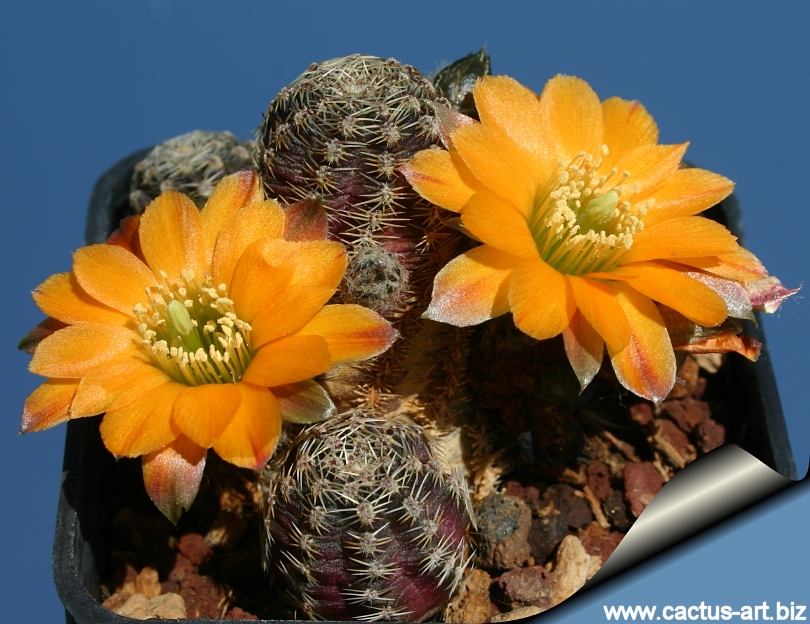
Rebutia pygmaea var. diersiana R631
(Collector: Walter Rausch Locality: Camargo - Culpina, Chuquisaca,
Bolivia)
This simple plants create amazingly rich shapes with intensely coloured,
orange flowers produced in abundance from the lower stem.
|
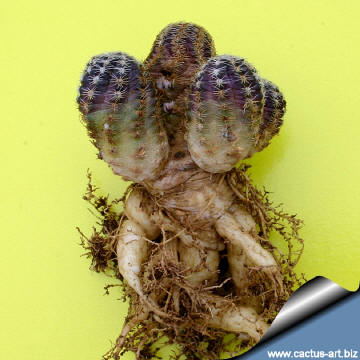 |
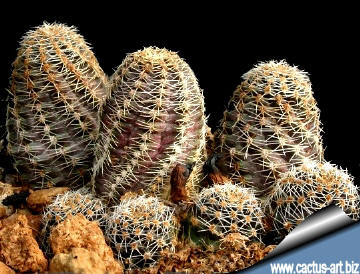
The stems are dark reddish-violet and would appear that
in cultivation they grow larger and cluster more vigorously than in
habitat. |
|
. |
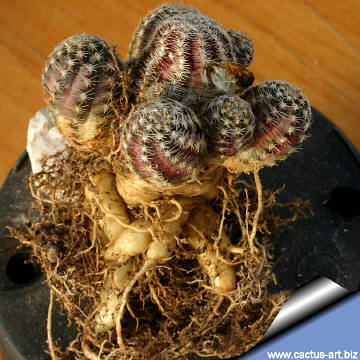 |
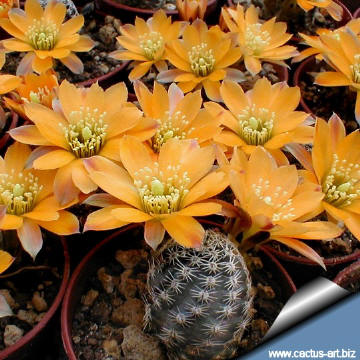 |
|
This is a positively
stunning plant when old enough to form a clump and one of most beautiful
rebutias.
The photo does not do it justice.
|
|


Advertising
|
|
|
|
|
Family:
Cactaceae (Cactus
Family)
Scientific name:
Rebutia diersiana
Rausch 1975
Description: W. Rausch
Published in: Kakteen und andere Sukkulenten, 26:
25-26, 1975 / K. u. a. S., 26 (2): 25, 1975
Habitat:
They grow on steeply sloping ground where water
rarely stands for any length of time
Conservation status: Listed in
CITES appendix 2.
Synonyms:
- Rebutia pygmaea (Fries) Britton &
Rose
- Lobivia pygmaea
- Mediolobivia pygmaea diersiana
- Mediolobivia diersiana atrovirens
- Mediolobivia pygmaea nigrescens hort.
|
Description: Very small multi-headed plants,
slow growing and slow to clump.
Stem: Dark reddish-violet body, cylindrical, individual heads 2 cm
wide, 4 cm tall. With exposure to strong light the body turns a rich
violet-chocolate-bronze. The violet colour intensify in the winter.
Areoles: Elongated with greyish wool.
Spines: Short, pectinate, glass-white.
Flowers: Beautiful orange coloured flowers.
Roots: Tap root:.
|
|
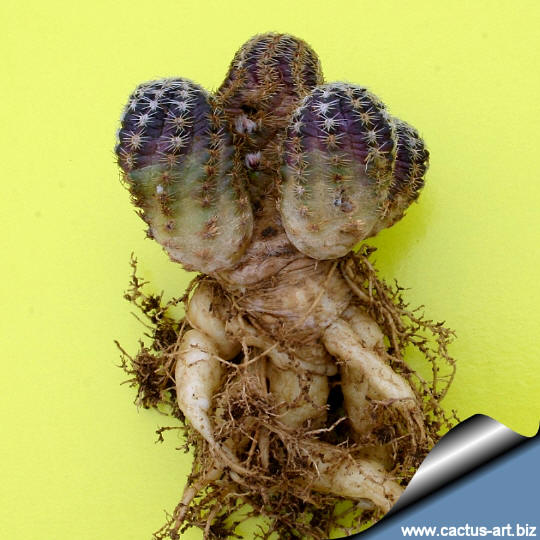 |
|
|
|
Cultivation: it is
easy to grow and recommended for beginners. Prefer gritty, porous mix
with a pH slightly on the acidic side. Full sun to light shade, Water
regularly in summer but do not overwater (the root system is rot prone)
and allow the pot to dry out between waterings. Keep dry in winter Hardy
to -4°C it will take low temperatures when dry and do require a winter
rest period.
Pest and disease: This plants are subject to mealy-bug attack and
to fungus and rot problems brought about by overwatering and high
humidity.
Note: It would appear that
in cultivation they grow larger and cluster more vigorously than in
habitat.
Propagation: seed or offsets. Photo of conspecific taxa,
varieties, forms and cultivars of Rebutia pygmaea .
(This taxon has lots of synonyms (like most Rebutia)
whit several controversial varieties and subspecies):
|
|